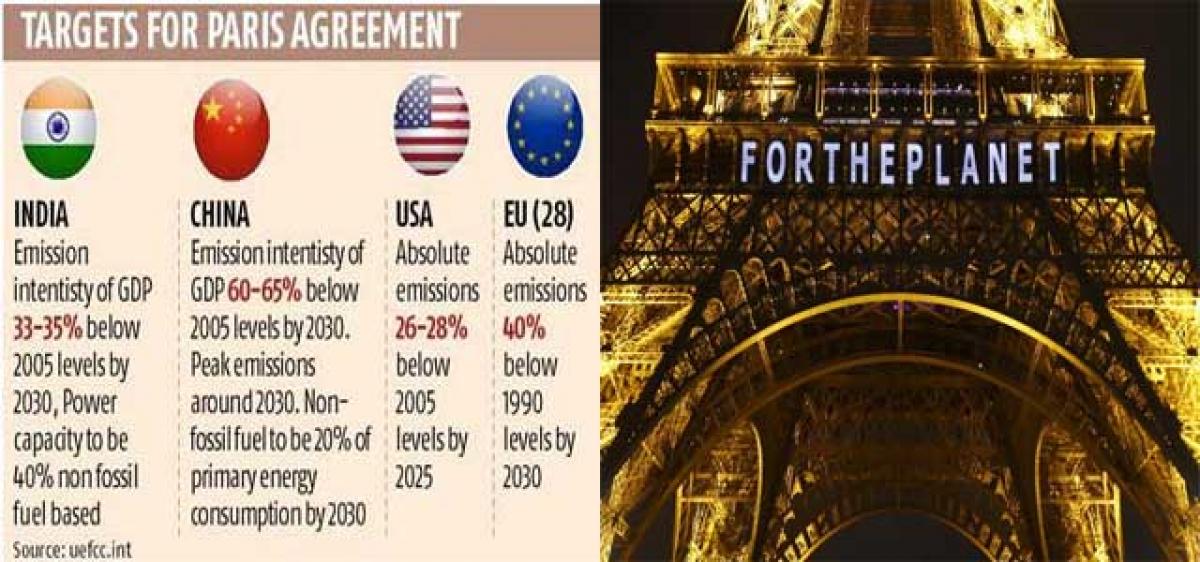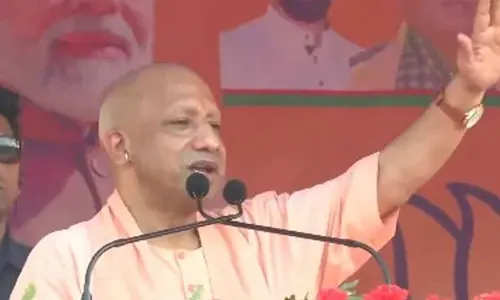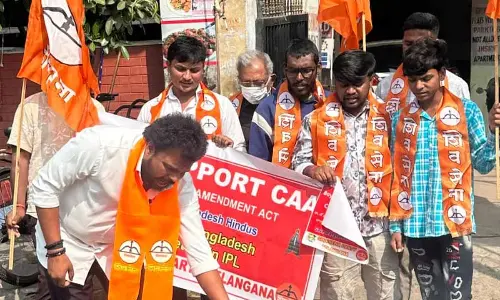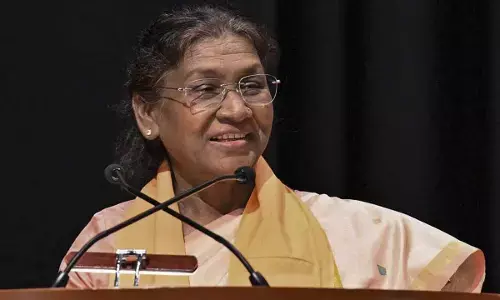Over optimistic or a trouble for developing nations

The overall goal of the Paris agreement, to keep global temperature rise to a specified quantum compared to pre-industrial levels, is pegged at either “below 1.5°C”, or, as “well below 2°C”.
The ‘Paris Agreement’, the biggest environment agreement ever, is ‘adopted’ by over 190 countries
The overall goal of the Paris agreement, to keep global temperature rise to a specified quantum compared to pre-industrial levels, is pegged at either “below 1.5°C”, or, as “well below 2°C”.
India felt that a transparency and accountability regime should not treat rich and poor nations alike. India’s position is based on logic that developing nations still lacks necessary technology to measure perils of climate change.
| Syllabus General studies paper- III Mains and Prelims Questions
|
For example, India does not have the capacity to measure automotive emissions based on vehicle uses accurately, while the US does that every year.
Salient feature of the agreement
- Developed country as Role model-Extent to which developing countries would effectively implement their commitments would depend on developed countries living upto their own commitments on financing, technology transfer and capacity building.
- On peaking of greenhouse gas emissions-The discussion is on making it “as soon as possible” with the caveat that peaking requires deeper cuts of emissions by developed countries and longer periods for developing countries.
- Achieving zero GHG emissions growth by 2060-80 is proposed.
- Fund mobilisation-Appropriate pricing of greenhouse gases emissions in its many forms, is an important instrument for the reorientation of investment and finance flows consistent with a pathway towards low emission and climate resilient economies and societies.
- Technology framework–By providing overarching guidance to the work of the technology mechanism”. It would promote and facilitate enhanced action on technology development and transfer.
- The agreement is much more comprehensive than the Kyoto Protocol which was limited to assigning greenhouse gas emission reduction targets for a group of developed countries.
- It asks every country to make “nationally determined “contributions in the fight against climate change.
- It also seeks to establish a mechanism by which the climate actions of all the countries can be periodically monitored and evaluated to see whether the world was actually able to combat climate change and whether the actions needed to be scaled up.
Win-Win Situation for all
- Developed Nations -The developed countries have ensured that henceforth climate actions would be taken by every nation and not just by them, as was the requirement in the existing climate framework represented by the Kyoto Protocol of 1997.
- Developing Nations-The developing countries were able to take heart from the fact that the all-important principle of ‘differentiation’–that developed nations, being primarily responsible for greenhouse gas emissions, must take greater action to fight climate change–has been retained, even though in a diluted form .
- The island nations and least developed countries—most vulnerable to climate change were happy to have forced the rest of the world to acknowledge the need to take a 1.5 degree path instead of the 2degree it is more comfortable with.
Few of the issues with Paris Agreement
- No clarity on finance and technology transfer issues; the related IPR issues have not been covered.
- No mechanism for updated targets for countries based on stocktaking of carbon dioxide or equitable distribution of the remaining carbon budget for the world.
- Ignoring the CBDR-RC principle; putting developing and developed countries at same level. Though INDCs still allows the space for equitable targets for reduction, it is not guaranteed and it is thus believed that developing countries would be at a disadvantage.
- Binding targets: Countries have pledged their emission reduction targets. But these are only pledges. Even though China and USA have recently ratified Paris Agreement, the implication for violation of the pledges is not clear.
- Periodic revision of target-The emission reduction numbers don’t add for now and they need to be revised every five years or so. Developed countries don’t accept any criteria that include historical accumulated emissions.
- Reporting action: After 2020 once the agreement comes in to force countries will have to report back periodically how they are faring against their pledges. This could become the Trojan horse that brings parity between the two without saying as much.
- Developing country targets: Most developing countries have made their targets for the Paris agreement conditional on the nature of the Paris agreement as well as the delivery of finance and technology.
- Developed countries want at least a part if not the full target from each developing country to be enshrined unconditionally.
- Technology transfer: Developed countries oppose the proposals from different developing country groups including India to address issues of intellectual property resources, future technology development and an institutional arrangement for this under the Paris agreement.
- Adaptation-Developed countries see the core agreement as only about reducing emissions and accounting for these reductions.
- Experts say that target of reducing the temperature by 2°C is over-optimism and not feasible.
From CBDR to INDC
- Common but Differentiated Responsibilities and Respective Capabilities (CBDR–RC) is a principle within the United Nations Framework Convention on Climate Change (UNFCCC) that acknowledges the different capabilities and differing responsibilities of individual countries in addressing climate change.
- The principle of CBDR–RC is enshrined in the 1992 UNFCCC treaty, which was ratified by all participating countries.
- CBDR-RC has served as a guiding principle as well as a source of contention in the UN climate negotiations. Reflecting CBDR-RC, the Convention divided countries into “Annex I” and “non-Annex I,” the former generally referring to developed countries and the latter to developing countries. Under the Convention Annex I countries have a greater mitigation role than non-Annex-I countries.
Reasons behind collapse of CBDR-RC
- Starting of discomfort among Annex-I countries: Many western countries were not ready to put constraints on their economies for a global cause that had no direct and immediate returns.
- Growth of China: The rapid growth of China from the 1990s too had started to hurt the interests of the West. Stricter emission standards for their industries would have made their products even more non-competitive against Chinese goods. It helped their case that China’s emissions had overtaken the US as the world’s leading emitter of GHGs.
- U.S role: The US refused to ratify the Kyoto Protocol and, for the first time since the birth of UNFCCC, started playing a proactive role in shaping the global architecture on climate change. The argument was that without restraining the emissions of China-and India, Brazil, South Africa, Mexico, etc.-no effective fight against global warming could be launched.
- Some of these countries, including Japan, Australia and Canada, walked out of the Kyoto Protocol.
- Emission cut in INDCs: Now every country needed to take demonstrable action, the quantum and extent of which was to be decided by the country itself.
Intended Nationally Determined Contributions
What are INDCs: INDC outlines the post-2020 climate actions they intend to take under a new international agreement.
- India’s INDCs contains the following proposals
- To reduce the emissions intensity of its GDP by 33 to 35 per cent by 2030, from 2005 levels
- To create an additional carbon sink of 2.5 to 3 billion tones of CO2 equivalent through additional forest and tree cover by 2030.
- Increase the Share of Non-Fossil Fuel Based Electricity.
- Sustainable Lifestyles.
- Cleaner Economic Development.
- Technology Transfer and Capacity Building.
- India’s achievements towards climate change till now
- Many policy measures have been taken to promote low carbon strategies and Renewable Energy have resulted in the decline of emission intensity of our GDP by 12% between 2005 and 2010.
- Currently renewable energy, nuclear energy and hydropower together contribute about 30 per cent of the overall installed capacity.
- India is running one of the largest renewable capacity expansion programmes in the world. Between 2002 and 2015, the share of renewable grid capacity has increased over 6 times.
- India is one of the few countries where forest and tree cover has increased in recent years and the total forest and tree cover amounts to 24% percent of the geographical area of the country.
Significance of India’s INDC
- India stated that the national plans given in the INDC depends on the unencumbered availability of clean technologies and financial resource from around the world. Such a position is consistent with the principle of ‘common but differentiated responsibilities’ that guides climate negotiations.
- INDCs announced by India are comprehensive, balanced, equitable and pragmatic and addresses all the elements including Adaptation, Mitigation, Finance, Technology Transfer, Capacity Building and Transparency in Action and Support.
- India has also decided to anchor a global solar alliance, INSPA (International Agency for Solar Policy & Application), of all countries located in between Tropic of Cancer and Tropic of Capricorn.
- During preparation of INDCs govt. held stakeholder consultations with the specific involvement of the key Ministries and State Governments. Interactions were also held with civil society organisations, think tanks and technical & academic institutions of eminence.
- India has to put economic growth before committing itself to cut down emissions.
- Criticism
- The INDC data estimate that between now and 2030, at least $2.5 trillion would be required for the country to meet climate change action requirements. It will be difficult to invest such a huge money without international help.
- Cutting down emission will slow down the economy, therefore needs is a comprehensive strategy
Steps taken to achieve INDCs
- A scheme for development of 25 Solar Parks, Ultra Mega Solar Power Projects, canal top solar projects and one hundred thousand solar pumps for farmers is at different stages of implementation.
- The energy efficiency of thermal power plants will be systematically and mandatorily improved.
- The switch from Bharat Stage IV (BS IV) to Bharat Stage V (BS V) and Bharat Stage VI (BS VI) to improve fuel standards across the country is also planned for the near future.
- Urban transport policy will encourage moving people rather than vehicles with a major focus on Mass Rapid Transit Systems.
- Government of India’s long term goal is to increase its forest cover through a planned afforestation drive through initiatives like Green India Mission, green highways policy, financial incentive for forests, plantation along rivers, REDD-Plus and Compensatory Afforestation Fund Management and Planning Authority.
- India will have 40 per cent of the total installed power capacity in 2030 based on non-fossil fuel-based sources.
















